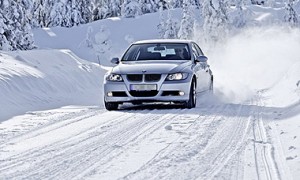Driving in snow and ice can be dangerous. Tires can slid and brakes can fail and if these happen, anybody can get into an accident.

Research has shown that 24 percent of all car crashes take place during bad weather conditions such as when there’s snow, ice and rain. Some 7,400 people get killed and more than 670,000 are injured in car accidents every year.
Authorities have also observed that many drivers underestimate the dangers that snow and ice can pose. What happens is they drive in their normal style and fail to adjust their speeds in harsh weather conditions.
Indeed, many motorists continue to defy the warnings of authorities about bad weather and road conditions and go on with their trips feeling confident they will survive. With the holidays coming up and people get invited to celebrations here and there, there’s no stopping motorists from traveling and celebrating with family and friends.
Motoring experts are reminding people, especially the drivers, to be more vigilant and to plan ahead if they want to travel safely during wintertime. Early preparation and a change in driving style are your best protection from road accidents when driving in snow and ice. Understanding how weather impacts distance, visibility, pavement friction, travel speeds and vehicle performance is as vital.
Useful Tips
Here are some steps to follow then to ensure you drive and arrive at your destination safely.
Prepare your vehicle at least half an hour before you leave. Check that it’s in good running condition by inspecting your tires, doors, windshields, mirrors and lights.
Clear all windows of snow and ice by using a scraper or de-icer. Clear the roof as well of any snow.
Bring your toolkit and make sure you have spare tires. Your kit should contain a tow rope, boots, snow shovel, warning triangle, water repellant spray, an old sack and first aid kit. Do bring along blankets and coats as well.
When driving, give more distance to the car in front of you. This will give you more time to react is something wrong happens to the vehicle in front.
Reduce your speed as well and do your best to maintain a constant speed. Also, practice gentle maneuvers to ensure your safety and that of your passengers.
If you are driving downhill, be sure to use the third or fourth gear to avoid skidding. And always be gentle when applying brakes.
Photo via cars.uk.msn.com
About the guest author:
Jack is a blogger who has written numerous posts on road accidents. He has utilized various personal injury resources online to come up with compelling articles.
Originally posted on December 12, 2012 @ 1:15 pm